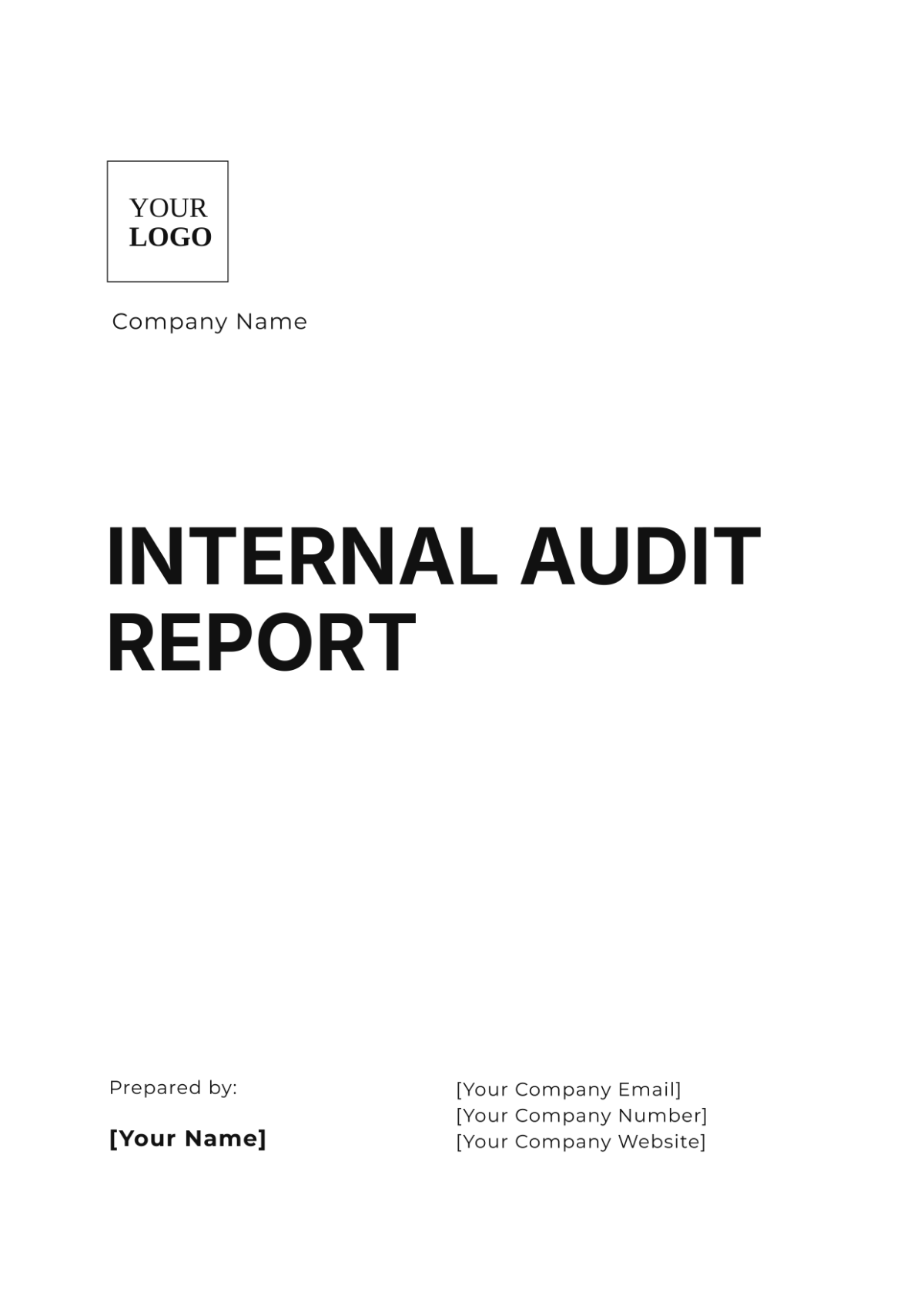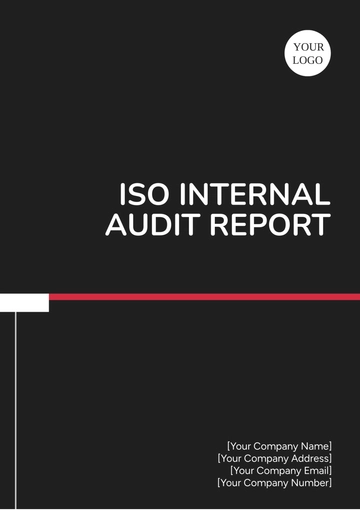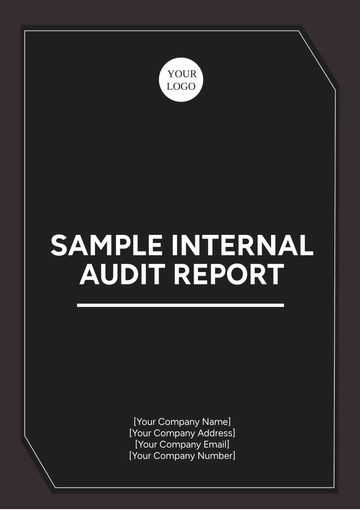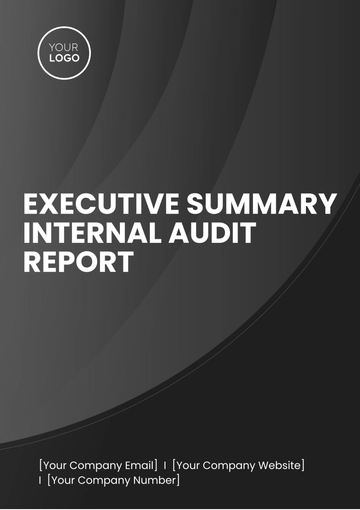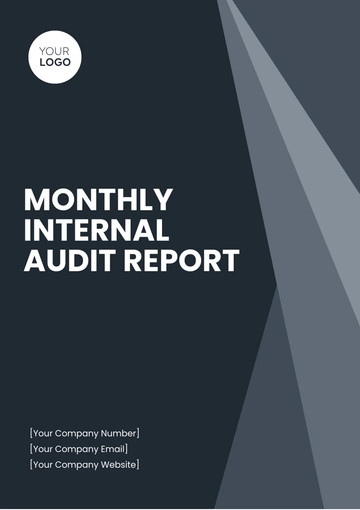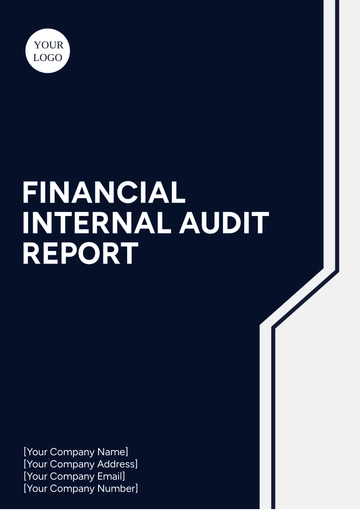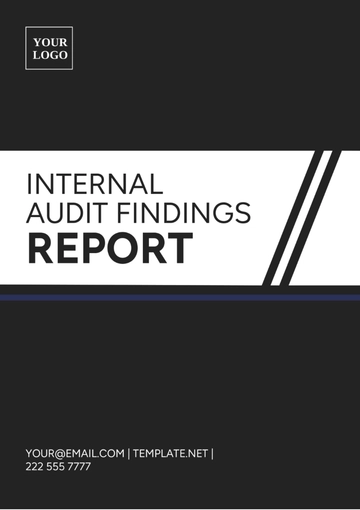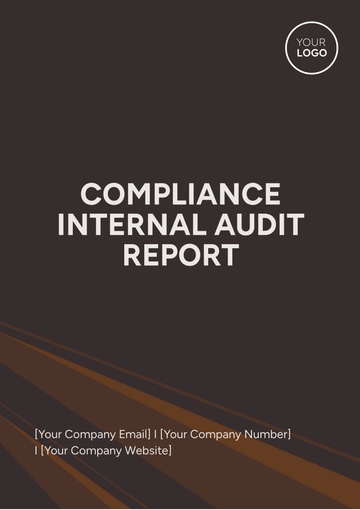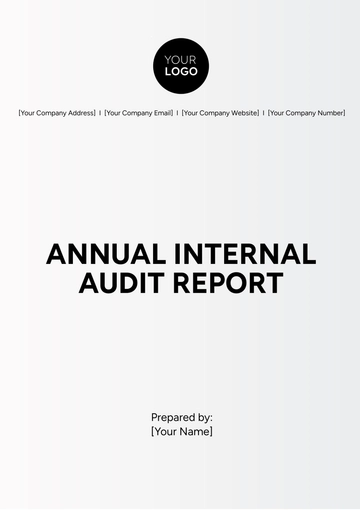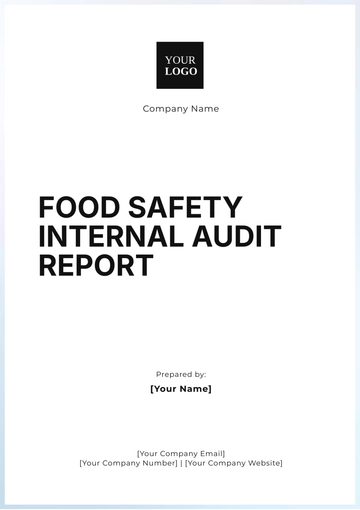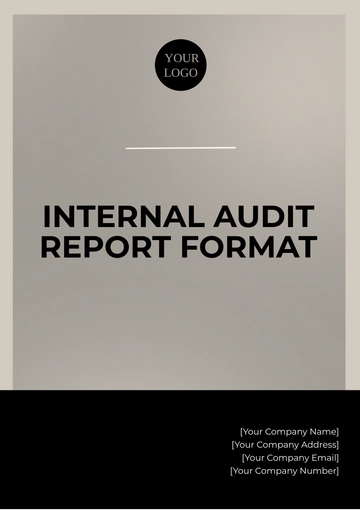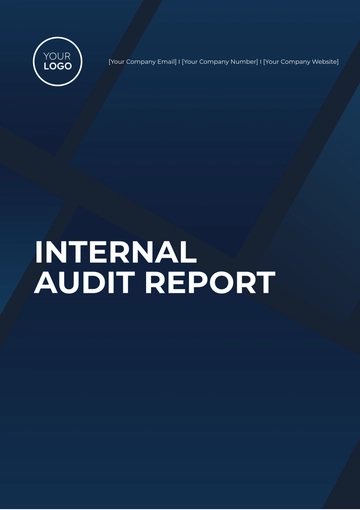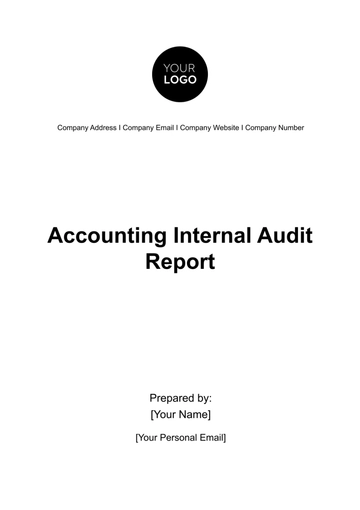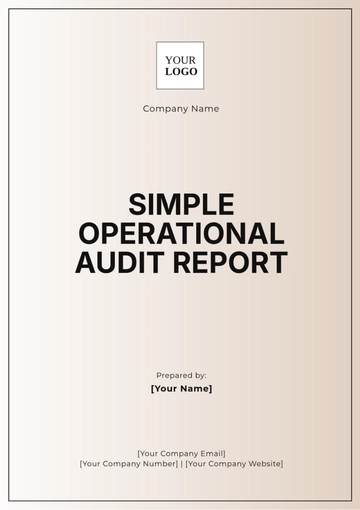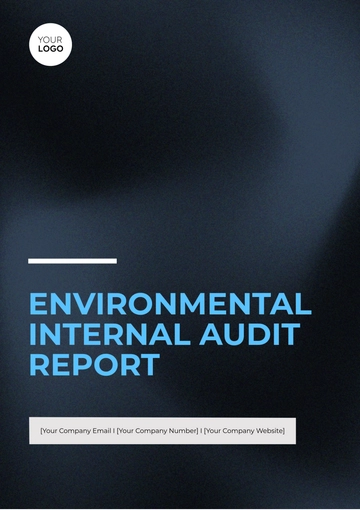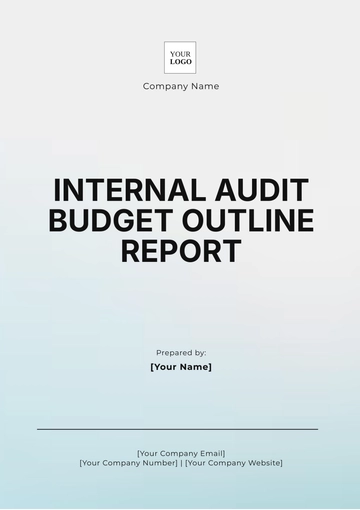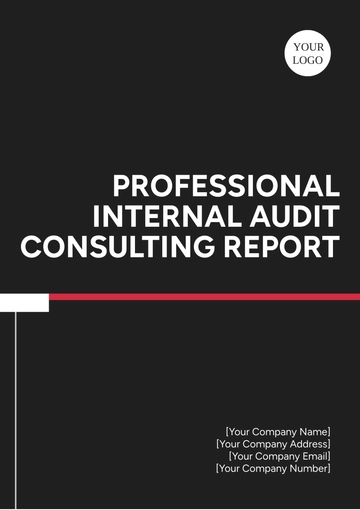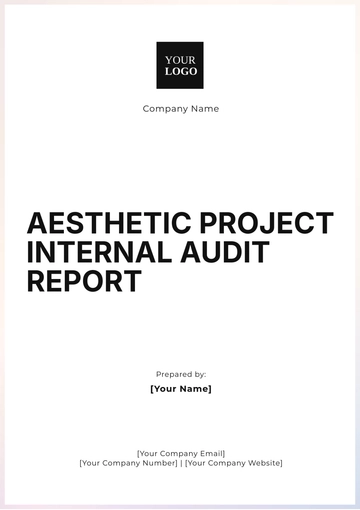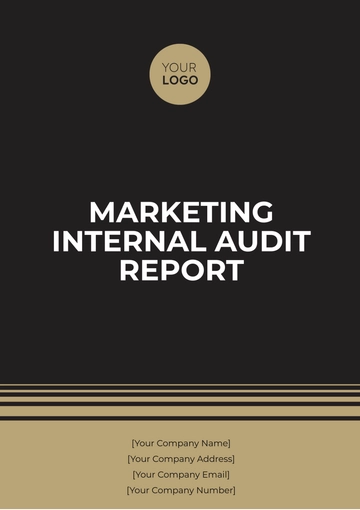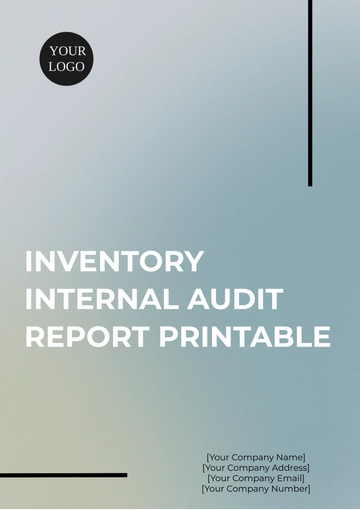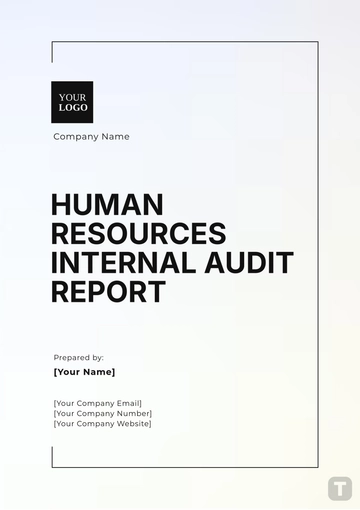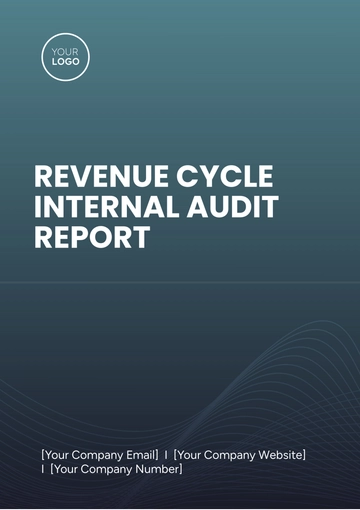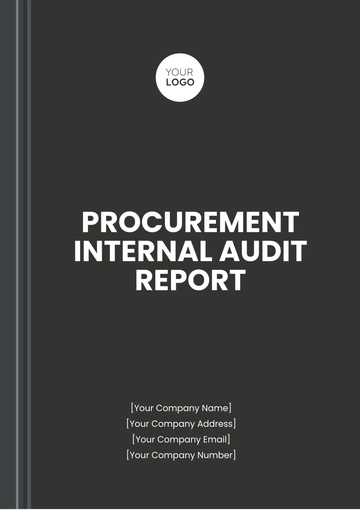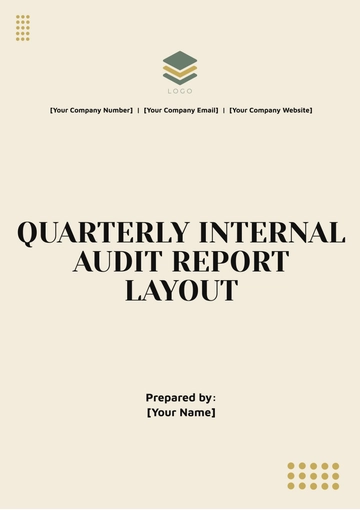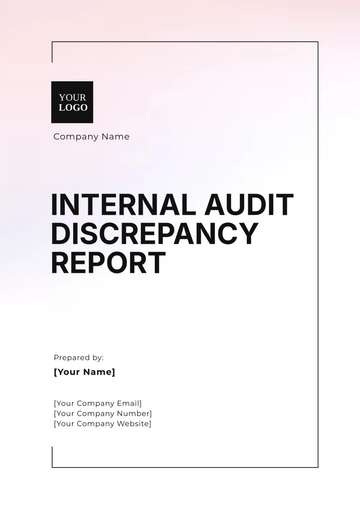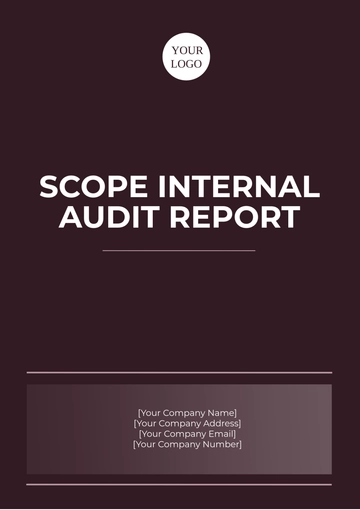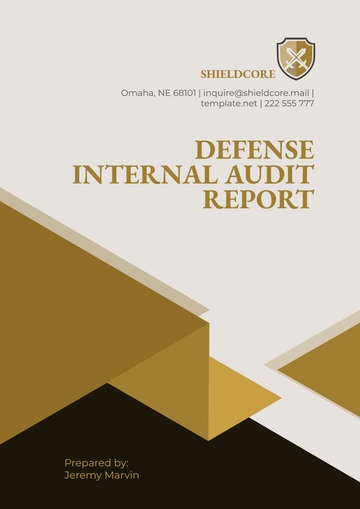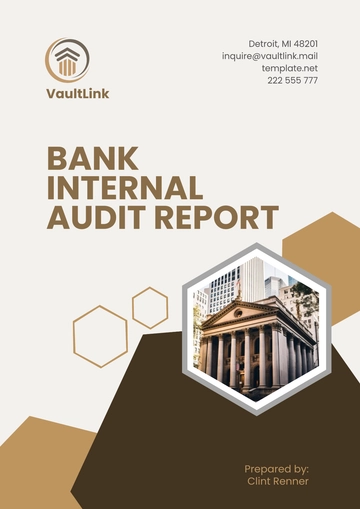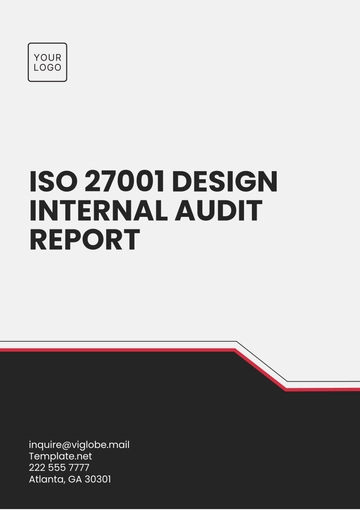Internal Audit Report
I. Executive Summary
The purpose of this Internal Audit Report is to evaluate [Your Company Name]'s adherence to the relevant laws, regulations, and internal policies. The audit was conducted over three months, focusing on key compliance areas including financial reporting, data protection, and environmental regulations. This report outlines the findings, identifies areas of non-compliance, and provides recommendations for corrective actions.
II. Scope and Objectives
A. Scope
The scope of the audit covered the following key areas:
Financial Reporting Practices
Evaluated adherence to GAAP standards, internal accounting policies, and Sarbanes-Oxley Act (SOX) Section 404 requirements.
Data Protection Measures
Assessed compliance with GDPR, CCPA, and internal cybersecurity protocols, focusing on encryption, data access controls, and data breach prevention measures.
Environmental Compliance
Focused on adherence to local and federal environmental regulations, waste management policies, and the sustainability initiatives that have been implemented.
B. Objectives
The primary objectives of the compliance audit were:
Compliance Assessment
To determine if [Your Company Name] adheres to relevant legal, regulatory, and internal policy requirements in key operational areas.
Effectiveness of Internal Controls
To evaluate the adequacy of internal controls in safeguarding company assets and ensuring accurate and timely financial reporting.
Risk Mitigation
To identify areas of non-compliance, assess the potential risks associated with these gaps, and recommend practical corrective actions to minimize those risks.
III. Methodology
Our audit employed a combination of qualitative and quantitative methodologies to ensure a thorough review:
Document Review
Analyzed financial statements, regulatory filings, data protection policies, and environmental audit reports to identify gaps in compliance and control failures.
Interviews
Conducted interviews with department heads, financial controllers, IT staff, and environmental compliance officers to gather insights on current practices and potential challenges.
Control Testing
Tested internal controls through both substantive procedures (sampling financial transactions) and control testing (reviewing IT system logs for data protection compliance).
Regulatory Compliance Analysis
Compare current practices against applicable laws, including the Sarbanes-Oxley Act, GDPR, and local environmental statutes.
IV. Findings
A. Financial Reporting
Finding 1: Inadequate Documentation of Financial Transactions
Impact: Weak documentation increases the likelihood of misstatements, errors, and audit challenges. This can lead to inaccurate financial reporting and difficulties in substantiating transactions during external audits.
Recommendation: Develop and enforce a documentation protocol that requires detailed records for every financial transaction, with mandatory dual approvals for high-value entries. Automate this process where possible using an ERP system.
Finding 2: Non-Compliance with SOX Section 404 Requirements
Impact: Failure to comply with SOX requirements poses a risk of financial penalties and may diminish investor confidence due to perceived weak governance.
Recommendation: Conduct a full internal SOX audit to map control deficiencies and implement an enterprise-wide risk management system to ensure real-time monitoring and remediation of control gaps.
B. Data Protection
Finding 1: Insufficient Encryption of Sensitive Data
Impact: Unencrypted data poses a significant risk of breaches, which could result in regulatory fines, loss of customer trust, and litigation.
Recommendation: Deploy AES-256 encryption for sensitive customer and employee data both at rest and in transit. Regularly review and update encryption protocols to meet evolving cybersecurity threats.
Finding 2: Lack of Employee Training on Data Protection Policies
Impact: Untrained employees are prone to mishandling data, increasing the risk of accidental breaches. This exposes the company to GDPR fines and reputational damage.
Recommendation: Implement a comprehensive, mandatory data protection training program for all employees, with refresher courses every six months. Incorporate phishing simulations and data handling exercises to test employee preparedness.
C. Environmental Compliance
Finding 1: Non-Compliance with Waste Disposal Regulations
Impact: Improper waste disposal can lead to significant environmental damage and financial penalties from regulatory bodies.
Recommendation: Partner with certified waste management companies to ensure compliance with local and national environmental regulations. Update internal waste management policies to align with best practices, and implement real-time waste tracking software.
Finding 2: Inadequate Record-Keeping for Environmental Audits
Impact: Poor documentation hinders the ability to demonstrate compliance during external environmental audits, increasing the risk of fines and corrective actions.
Recommendation: Develop an electronic record-keeping system specifically for environmental compliance, ensuring all audits and inspections are thoroughly documented, stored, and easily accessible for regulatory review.
V. Recommendations
A. Financial Reporting
Implement a robust internal control framework in line with SOX 404, focusing on areas of high financial risk.
Automate the documentation process for financial transactions using an ERP solution to reduce errors and improve transparency.
B. Data Protection
Introduce company-wide encryption standards using AES-256 technology and ensure all cloud services comply with international data privacy laws.
Establish quarterly data protection awareness campaigns, including simulations of potential threats such as phishing.
C. Environmental Compliance
Update waste management practices by adopting eco-friendly disposal methods and conducting an annual review to ensure compliance.
Introduce a centralized database for all environmental audit records, ensuring timely and accurate reporting.
VI. Conclusion
This Internal Audit Report highlights several areas where [Your Company Name] is currently non-compliant with relevant laws and regulations. Immediate action is required to address these issues to avoid potential legal and financial repercussions. The recommendations provided in this report should be implemented promptly to strengthen compliance and mitigate risks.
VII. Appendices
Appendix A: Audit Checklist
Compliance Area | Audit Steps | Status |
|---|
Financial Reporting | Review documentation and test controls | Completed |
Data Protection | Assess encryption methods and employee training | Completed |
Environmental | Evaluate waste disposal processes and record-keeping | Completed |
Appendix B: Compliance Audit Schedule
Audit Phase | Duration | Responsible Party |
|---|
Planning | 2 Weeks | Internal Audit Team |
Fieldwork | 6 Weeks | Internal Auditors |
Reporting | 4 Weeks | Internal Audit Manager |
Follow-up | Ongoing | Compliance Officer |
Audit Conducted By:
Report Templates @ Template.net
